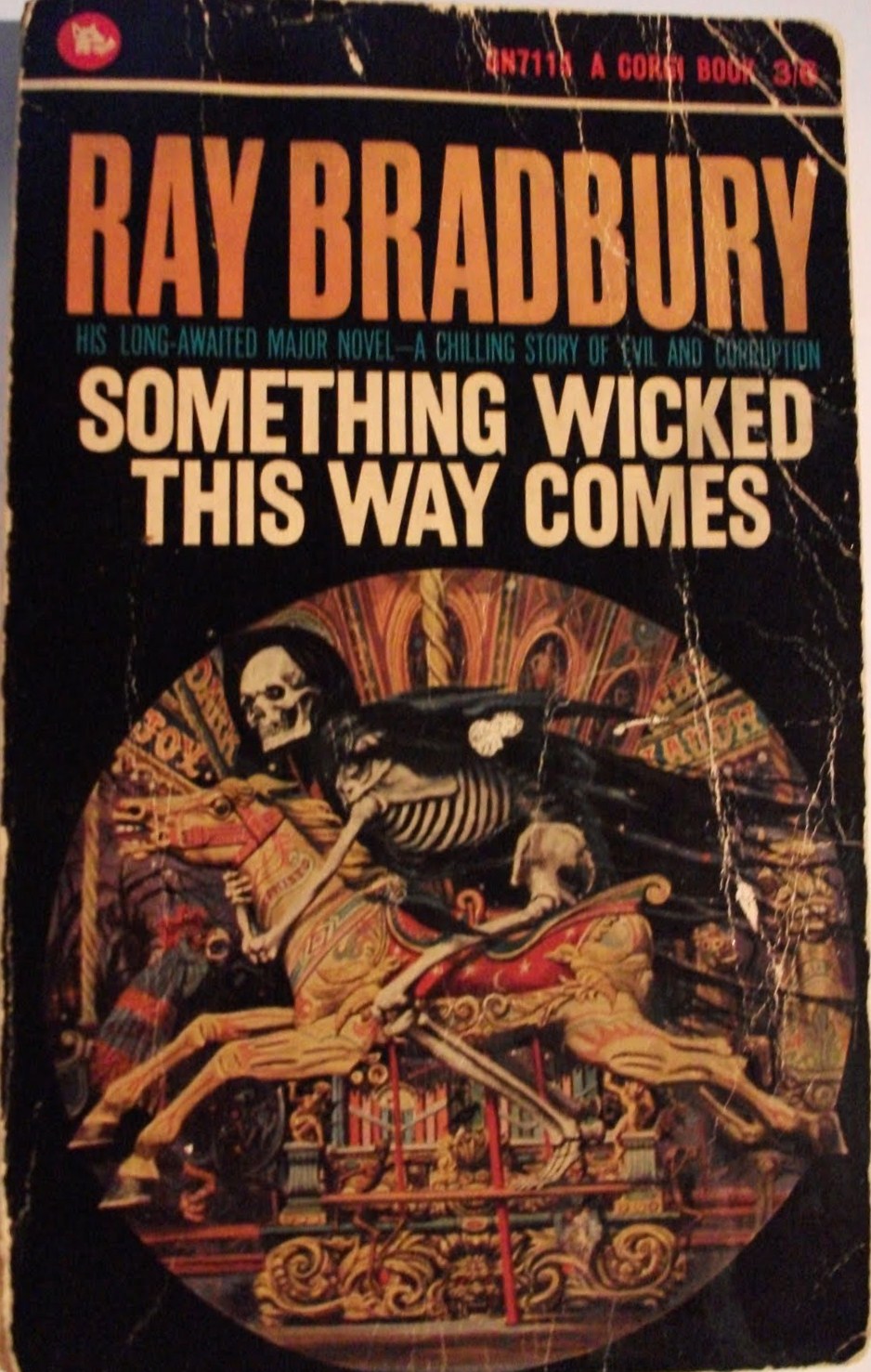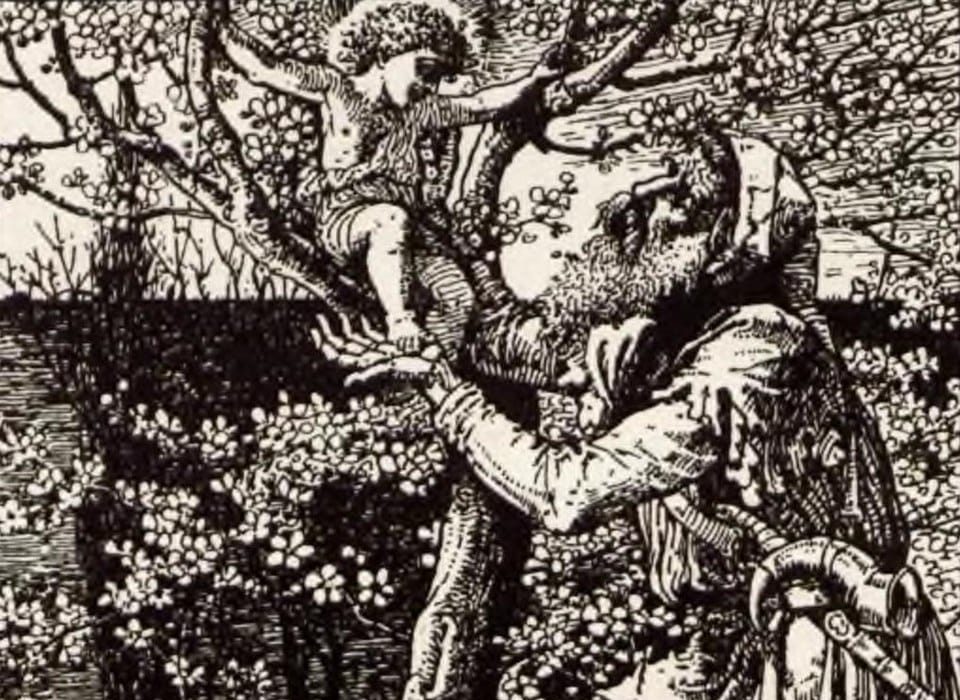Not many stories can start as innocuously as Something Wicked this Way Comes by Ray Bradbury. With the intervention of a lightning rod salesman with a conspicuous name, the story begins. But the threat of dark storms on the horizon only foretell what is to come in this wonderfully scary and dark fantasy novel. In this post, we are examining darkness in one of Ray Bradbury’s finest novels.
Summary
In Something Wicked this Way Comes, Ray Bradbury tells the story of William Halloway and Jim Nightshade. They are two boys at the edge of childhood, already teens but not quite there yet. They are consumed with childhood youth and vitality, but after visiting a carnival and confronting the evil Mr. Dark, both boys are swept off on a frightening journey of aging and terror. Yet, through paternal love and happiness, they are able to confront the dark carnival and save themselves from its wretched grasp.
Analysis: Facing Darkness
Themes in Darkness
Bradbury incorporates a variety of themes in Something Wicked this Way Comes. These include coming of age, friendship, paternal love, selfishness, and heroism. With that said, I think one of the most important aspects of this book is Bradbury’s focus on the theme of facing darkness. What do I mean by this? Well, as with most Bradbury stories, there is a whimsical narrative on the top of a much darker, adult-oriented story. Take the The Halloween Tree, for example, which is certainly a children’s book by all facets and explanations.
However, deep down, in the subtext, we have a book about life and death. And, this is a book that is troubled with growing old and darkness coming too soon to the face of a young child. In this way, we have a funny story about an old, magical man who takes a group of Halloween-themed boys on an adventure through the history of Samhain. But then we also have a story about a group of boys willing to give up one year of their own life to ensure that their friend doesn’t die from his sickness on Halloween night.
Facing Physical Darkness
Ray Bradbury, in Something Wicked this Way Comes, crafts a similar setup. Two boys are on an adventure of a lifetime at a Halloween carnival. They are then pursued by the denizens of darkness, and are only able to stop them through their own love and friendship. Yet, we also have a story about growing older before your time. We have a story of death and darkness just around the corner. We have a story of an old librarian who does not feel like himself anymore. And, we have the story of a sinister man who can change all of that…for a price. As such, this is a horror novel about facing darkness.
At the beginning of the story, Jim and Will are visited by a lightning rod salesman as a storm appears on the horizon. It is a literal darkness that they will face. Yet, it is also a good bit of foreshadowing of events yet to come. After venturing to the carnival, the boys see such wonders that are only so cherished by a child. Though, these wonders are but a facade. The boys then find themselves confronted by Mr. Dark, who is interested in their precociousness and severity at such a young age. But the boys’ curiosity get the better of them and through their investigation this conflict erupts into a dark war of sorts.
In one terrifying moment, the boys realize somebody is looking for them from on high.
Bradbury writes:
The temperature dropped forty degrees.
Because now the storm-bleached balloon whisper-purled, plummet-sank softly down, its elephant shadow cooling gemmed lawns and sundials as they flaunted their swift gaze high through that shadow.
And what they saw was something akimbo and arustle in the down-hung wicker carriage. Was that head and shoulders? Yes, with the moon like a silver cloak thrown up behind. Mr Dark! thought Will. The Crusher! thought Jim. The Wart! thought Will. The Skeleton! The Lava Sipper! The Hanging Man! Monsieur Guillotine!
No.
The Dust Witch.
And what is more frightening than a witch in a hot-air balloon searching for you through the sky while you can only look on in horror? What darkness is this?
Facing Emotional Darkness
Nevertheless, there are more evils in the world than the tangible. Mr. Halloway is a central character to the story and symbolizes another kind of darkness: aging. As he watches the boys run and flaunt their youth, he yearns to be with them. He yearns to be young again.
Watching the boys vanish away. Charles Halloway suppressed a sudden urge to run with them, make the pack. He knew what the wind was doing to them where it was taking them, to all the secret places that were never so secret again in life. Somewhere in him, a shadow turned mournfully over. You had to run with a night like this, so the sadness could not hurt.”
There is a ping of pain when growing older. Sometimes you must stop and realize that it’s happening. Often times, this is too late. Your good days are behind you, and the running, jumping, and playing is over. Early on in the novel, Jim and Will talk to Mr. Crosetti, the local barber, who smells cotton candy. The smell is overwhelmingly nostalgic, and this brings him to tears. “I’m crying. Why? Because I remember how long a time ago, boys ate that stuff. Why haven’t I stopped to think and smell the last thirty years?”
Charles Halloway lives in this world. Watching the two boys run, he wishes he was there, but there is no going back. One can only move forward into the future and out of the light.
Becoming Darkness
In the aftermath of their final confrontation with Mr. Dark, Jim, Will, and Will’s father all wonder about the carousel and its magic powers to turn time. But they all realize that the carousel is a trick wrapped in a carnival package. They can not possibly continue using the machine or allowing friends to use it, because then they would themselves would become shadows. The true darkness lies at the center of intention:
Together, they think: “…finally you wind up owner of the carousel, keeper of the freaks…proprietor for some small part of eternity of the traveling dark carnival shows…” You become darkness, Bradbury tells the reader. You are no longer at odds. You are one with it, and you are on the losing side.
Conclusion
In Something Wicked this Way Comes by Ray Bradbury, we find a story of darkness, aging, and desires. Yet, there is also a story of light. There are those who would face darkness in its many forms and come out changed. These confrontations could be physical, as in the dust witch, or they could be symbolic, as in aging. Regardless, these engagements with darkness actually grow the characters into beings of love and hope. It seems to me that Bradbury often tells us to confront our darkness to come out as better people on the other side of conflict. Therefore, facing darkness is crucial to our character–who we hope to become or who we hope to be in the real world. The boys are better for their newfound understanding of darkness and desire, and Charles Halloway knows he can still feel young even if time has slipped away.
In the end, darkness may be at the center of our lives, but there is always a light to guide us.





Leave a comment